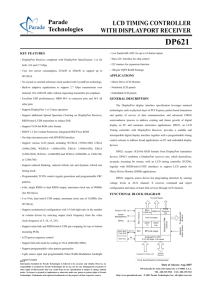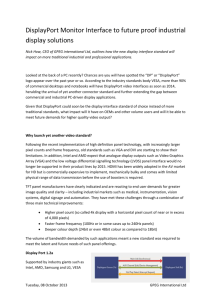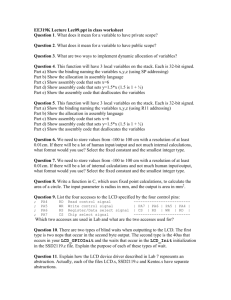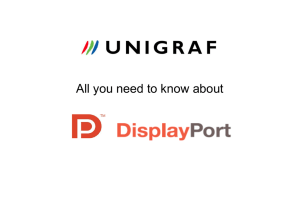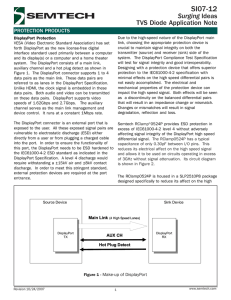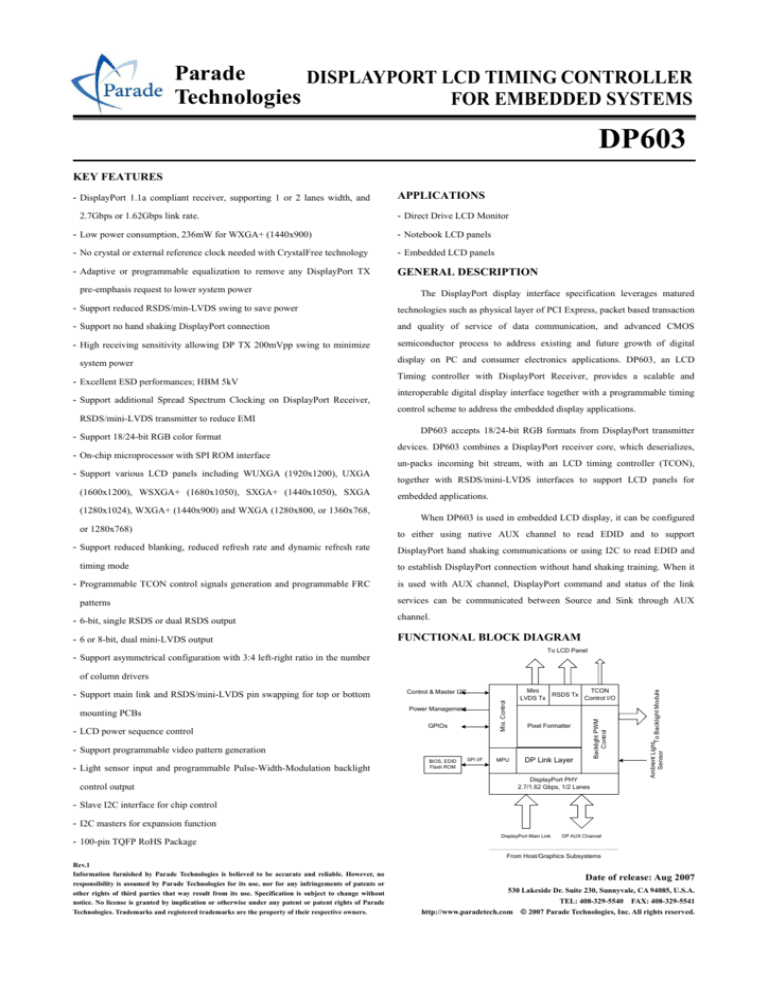
Parade
DISPLAYPORT LCD TIMING CONTROLLER
Technologies
FOR EMBEDDED SYSTEMS
DP603
KEY FEATURES
- DisplayPort 1.1a compliant receiver, supporting 1 or 2 lanes width, and
2.7Gbps or 1.62Gbps link rate.
APPLICATIONS
- Direct Drive LCD Monitor
- Low power consumption, 236mW for WXGA+ (1440x900)
- Notebook LCD panels
- No crystal or external reference clock needed with CrystalFree technology
- Embedded LCD panels
- Adaptive or programmable equalization to remove any DisplayPort TX
GENERAL DESCRIPTION
pre-emphasis request to lower system power
The DisplayPort display interface specification leverages matured
- Support reduced RSDS/min-LVDS swing to save power
technologies such as physical layer of PCI Express, packet based transaction
- Support no hand shaking DisplayPort connection
and quality of service of data communication, and advanced CMOS
- High receiving sensitivity allowing DP TX 200mVpp swing to minimize
semiconductor process to address existing and future growth of digital
system power
- Excellent ESD performances; HBM 5kV
- Support additional Spread Spectrum Clocking on DisplayPort Receiver,
display on PC and consumer electronics applications. DP603, an LCD
Timing controller with DisplayPort Receiver, provides a scalable and
interoperable digital display interface together with a programmable timing
control scheme to address the embedded display applications.
RSDS/mini-LVDS transmitter to reduce EMI
- Support 18/24-bit RGB color format
DP603 accepts 18/24-bit RGB formats from DisplayPort transmitter
devices. DP603 combines a DisplayPort receiver core, which deserializes,
- On-chip microprocessor with SPI ROM interface
un-packs incoming bit stream, with an LCD timing controller (TCON),
- Support various LCD panels including WUXGA (1920x1200), UXGA
(1600x1200), WSXGA+ (1680x1050), SXGA+ (1440x1050), SXGA
(1280x1024), WXGA+ (1440x900) and WXGA (1280x800, or 1360x768,
or 1280x768)
- Support reduced blanking, reduced refresh rate and dynamic refresh rate
timing mode
- Programmable TCON control signals generation and programmable FRC
patterns
together with RSDS/mini-LVDS interfaces to support LCD panels for
embedded applications.
When DP603 is used in embedded LCD display, it can be configured
to either using native AUX channel to read EDID and to support
DisplayPort hand shaking communications or using I2C to read EDID and
to establish DisplayPort connection without hand shaking training. When it
is used with AUX channel, DisplayPort command and status of the link
services can be communicated between Source and Sink through AUX
- 6-bit, single RSDS or dual RSDS output
channel.
- 6 or 8-bit, dual mini-LVDS output
FUNCTIONAL BLOCK DIAGRAM
To LCD Panel
- Support asymmetrical configuration with 3:4 left-right ratio in the number
- LCD power sequence control
Power Management
GPIOs
Backlight PWM
Control
mounting PCBs
Mini
TCON
RSDS Tx
LVDS Tx
Control I/O
Control & Master I2C
Mis. Control
- Support main link and RSDS/mini-LVDS pin swapping for top or bottom
Pixel Formatter
- Support programmable video pattern generation
- Light sensor input and programmable Pulse-Width-Modulation backlight
control output
BIOS, EDID
Flash ROM
SPI I/F
MPU
DP Link Layer
DisplayPort PHY
2.7/1.62 Gbps, 1/2 Lanes
Ambient Light
To Backlight Module
Sensor
of column drivers
- Slave I2C interface for chip control
- I2C masters for expansion function
- 100-pin TQFP RoHS Package
DisplayPort Main Link
DP AUX Channel
From Host/Graphics Subsystems
Rev.1
Information furnished by Parade Technologies is believed to be accurate and reliable. However, no
responsibility is assumed by Parade Technologies for its use, nor for any infringements of patents or
other rights of third parties that way result from its use. Specification is subject to change without
notice. No license is granted by implication or otherwise under any patent or patent rights of Parade
Technologies. Trademarks and registered trademarks are the property of their respective owners.
Date of release: Aug 2007
530 Lakeside Dr. Suite 230, Sunnyvale, CA 94085, U.S.A.
TEL: 408-329-5540 FAX: 408-329-5541
http://www.paradetech.com © 2007 Parade Technologies, Inc. All rights reserved.

